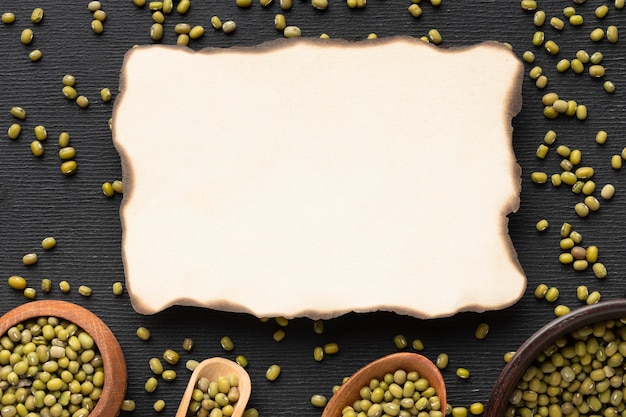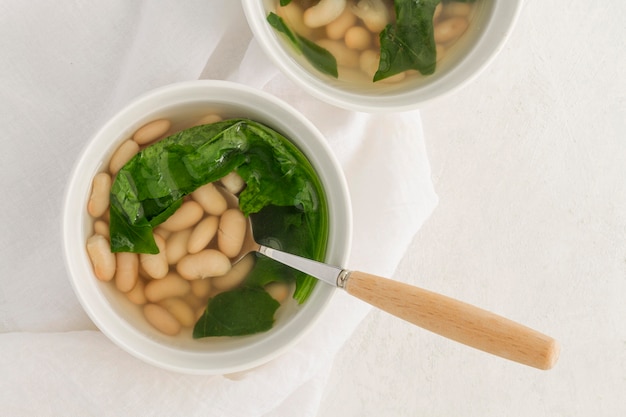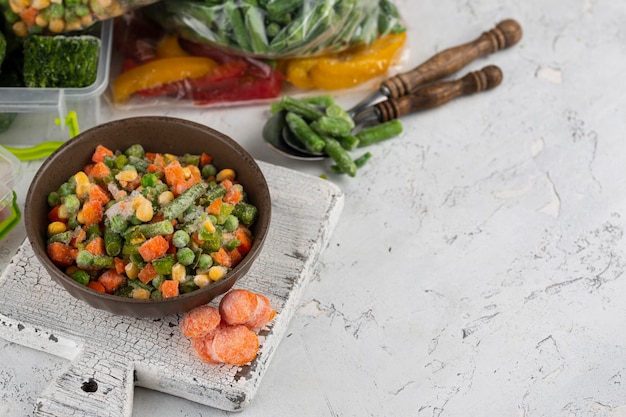Let's be honest, fava beans can seem a bit intimidating. You've got the "shelling" thing, which can feel like a fiddly chore, and then there's the whole "double-cooking" business, which sounds like a lot of effort. But trust me, it's all worth it. The end result is a dish bursting with flavour and texture, perfect for a spring barbecue or a simple, satisfying supper. It's a real journey, from the first green shoots poking through the soil to the satisfying snap of the pods. And I'm here to guide you every step of the way.
I've been growing fava beans in my little patch of garden for years now. I love the challenge of bringing something from seed to plate, and fava beans are just so rewarding. It's incredibly satisfying to see those little green pods emerge, knowing they'll soon be on my plate.
(Part 1) The Fava Bean Journey: From Seed to Sprout

I always start my fava beans indoors. It's like giving them a head start, a little helping hand to get them going. I fill some seed trays with compost, give them a good watering, and then I sow the seeds about an inch deep. I use a trowel, but a dibber works just as well. Then, I cover the tray with cling film and pop it in a bright, warm spot, ready for them to sprout.
The Importance of Patience
Now, here's where patience comes in. Fava beans aren't the fastest sprouters in the world. Don't be disheartened if it takes a week or two for the first green shoots to appear. It's a waiting game, and it's worth it. When those little green shoots finally emerge, it's a real joy to see. You've got a little army of bean plants on their way to becoming something delicious!
Hardening Off: Preparing for the Great Outdoors
Once the seedlings have a few proper leaves, it's time to start hardening them off. This is a gradual process of introducing them to the great outdoors. I usually put them in a sheltered spot in the garden for a few hours each day, increasing the time gradually. You want them to adjust to the colder temperatures and the wind, so they're ready for their permanent home in the garden.
(Part 2) Planting Out: Giving Them Their Own Space

Now, it's time to give those fava bean plants their own space. Choose a sunny spot in your garden, preferably with well-drained soil. Fava beans are greedy feeders, so they need plenty of space to grow and thrive. I plant them about 18 inches apart, and I make sure to dig in some compost or manure to give them a boost. This rich soil will help them grow big and strong.
Supporting Your Fava Bean Plants
A little tip: fava beans can get quite tall, so it's a good idea to give them some support. I use bamboo canes or sturdy sticks and tie the plants gently to them as they grow. This helps prevent them from flopping over and makes it easier to harvest the pods.
Watering Your Beans
Watering is crucial, especially when those plants are young. Keep the soil consistently moist, but don't let it get soggy. A good soak once a week should do the trick, and more often if it's really hot and dry.
(Part 3) The Wait is Over: Harvesting Those Delicious Pods

You'll know the pods are ready for harvesting when they're plump and full, and the tips start to turn brown. That's your signal that they're ready for the picking. I usually pick them every few days, and I always try to get them before they get too big and tough. You don't want them to become hard and leathery.
Storage
Store the beans in a cool, dark place. You can also blanch them and freeze them for later use. This is a great way to preserve the beans for use in the winter, when fresh fava beans are a little harder to come by.
(Part 4) The Fiddly Business of Shelling
Alright, now for the fiddly part - the shelling. This is where you get to see the fruits of your labour. Grab a bowl and start snapping those pods open. This is where the "broad" part of "broad beans" comes in. The beans inside are big and plump, just waiting to be enjoyed. Now, some people like to blanch their beans before shelling, but I find it easier to shell them raw. It's a bit of a messy affair, but it's a lot more fun, I reckon.
(Part 5) The Double Cooking Mystery
Here's where it gets interesting. Fava beans need to be cooked twice. Why? Because the outer skins can be a bit tough and bitter, and the double-cooking process helps to soften them up and remove that bitterness. It's a bit of a culinary trick, but it really makes a difference.
First Cook: Blanching
First, you blanch the beans in boiling water for about 2-3 minutes. This helps to set their colour and texture. Then, drain them and refresh them in cold water. This stops the cooking process and ensures they stay bright green.
Second Cook: The Finishing Touch
Now, you can use the blanched beans in any recipe you like. But if you want a super tender bean, you can cook them again. This time, I usually cook them in a pan with some olive oil, garlic, and herbs. They're delicious added to a salad, pasta dish, or just served on their own with a drizzle of olive oil and a pinch of salt.
(Part 6) Fava Bean Flavour: A Taste of Spring
Oh, the flavour! Fava beans have a unique flavour - fresh, slightly earthy, and a touch sweet. They're best enjoyed in the spring when they're at their peak. They add a wonderful depth of flavour to all sorts of dishes, and they're incredibly versatile.
(Part 7) Fava bean recipes: From Simple to Spectacular
There are so many delicious ways to use fava beans, it's hard to choose! Here are a few of my favourite fava bean recipes:
- Simple Fava bean salad: This is my go-to recipe when I want a quick and easy meal. I just mix the blanched beans with chopped tomatoes, onions, and herbs, and dress it with a simple vinaigrette. It's fresh, vibrant, and incredibly satisfying.
- Fava Bean and Pancetta Pasta: This is a classic Italian dish, and it's absolutely delicious. I fry some pancetta until crispy, then add the blanched beans, garlic, and chilli flakes. I toss it all with pasta and a generous amount of Parmesan cheese. The combination of salty pancetta, creamy beans, and sharp cheese is truly irresistible.
- Fava Bean and Mint Hummus: This is a refreshing twist on traditional hummus. I blend the blanched beans with tahini, lemon juice, garlic, and fresh mint. It's delicious with pita bread or crudités. The mint adds a lovely freshness to the hummus, making it perfect for warm weather.
- Fava Bean Fritters: These are a great way to use up leftover fava beans. I mix the blanched beans with flour, herbs, and spices, then fry them in a pan until golden brown. They're perfect as a side dish or a light lunch. You can get creative with the herbs and spices, adding your own personal touch.
(Part 8) The Fava Bean Family: Beyond the Basic Bean
Fava beans are a member of the legume family, and they have a few close relatives. Here are a couple of favourites that you might want to try growing:
Broadbeans: The Classic
These are the classic fava beans, with large, flat pods. They're the most common type of fava bean, and they're perfect for salads, soups, and stews.
Aquadulce Claudia: The Sweet One
This variety is known for its sweet, buttery flavour. It's a bit more delicate than the classic broadbean, so it's best used in dishes that showcase its flavour, like a simple pasta dish or a salad.
Longpod: A Unique Treat
Longpod beans are a bit different, as the name suggests. They have long, thin pods, and the beans inside are smaller than other fava bean varieties. They're great for stir-fries or for adding texture to a salad.
(Part 9) The Fava Bean Advantage: A Healthy Choice
Let's not forget the health benefits! Fava beans are a good source of protein, fiber, and vitamins, and they're low in calories. They're also a good source of folate, which is important for pregnant women. They're a nutritious addition to your diet.
But there's one thing to be aware of: fava beans contain a substance called vicine. This substance can cause a condition called favism in people who are deficient in an enzyme called glucose-6-phosphate dehydrogenase (G6PD). Favism can cause a range of symptoms, including anemia, jaundice, and kidney problems. If you have G6PD deficiency, you should avoid eating fava beans or any foods that contain them.
(Part 10) Fava bean faqs: Questions Answered
Here are some of the most frequently asked questions about fava beans, with detailed answers:
1. What do fava beans taste like?
Fava beans have a distinctive taste that's fresh, slightly earthy, and a touch sweet. They're often described as having a nutty flavour, similar to peas. The flavour is subtle but unique, and it really adds something special to any dish.
2. Are fava beans good for you?
Yes, fava beans are considered a healthy food. They're a good source of protein, fiber, and vitamins. They're also low in calories and fat. They're a great way to add a boost of nutrition to your meals.
3. How long do fava beans take to grow?
Fava beans take about 100-120 days to mature from planting to harvest, so plan ahead and sow your seeds early in the season. This will give them plenty of time to grow and produce those delicious pods.
4. How do you know when fava beans are ready to harvest?
Fava beans are ready to harvest when the pods are plump and full, and the tips start to turn brown. This is a sign that they've reached their peak and are ready to be picked.
5. What do you do with fava beans after you've harvested them?
After harvesting, shell the fava beans and blanch them in boiling water for 2-3 minutes. This will help to soften them up and remove any bitterness. You can then use them in any recipe you like. Blanching is a key step in preparing fava beans for cooking, and it makes a big difference in their texture and flavour.
Well, there you have it! My guide to growing and cooking fava beans. It's a journey, that's for sure, but it's worth it. So, get your hands dirty, give it a go, and enjoy the flavour of these amazing little beans. And remember, if you have any questions, feel free to ask. Happy gardening and happy cooking!
Everyone is watching

Corn on the Cob: The Ultimate Guide to Perfectly Cooked Ears
Healthy MealsAh, corn on the cob. Just the name evokes images of sunny days, barbecues, and that sweet, juicy flavour that ...

Scallops: The Ultimate Guide to Perfect Cooking
Healthy MealsAh, scallops. Those delicate, sweet, and utterly delicious morsels of the sea. They hold a special place in my...

Spaghetti Squash: The Ultimate Guide to Cooking and Serving
Healthy MealsRemember that time you saw spaghetti squash at the supermarket, looking all bumpy and strange, and thought, "W...

Salmon Cooking Times: Perfect Guide for Every Recipe
Healthy MealsLet me tell you, cooking salmon is an art form. It's all about getting that perfect balance: juicy and tender,...

Ham Cooking Time: How Long to Bake, Smoke, or Boil a Delicious Ham
Healthy MealsAh, ham. It's a classic, isn't it? A real crowd-pleaser, especially around holidays. And when done right, it'...
